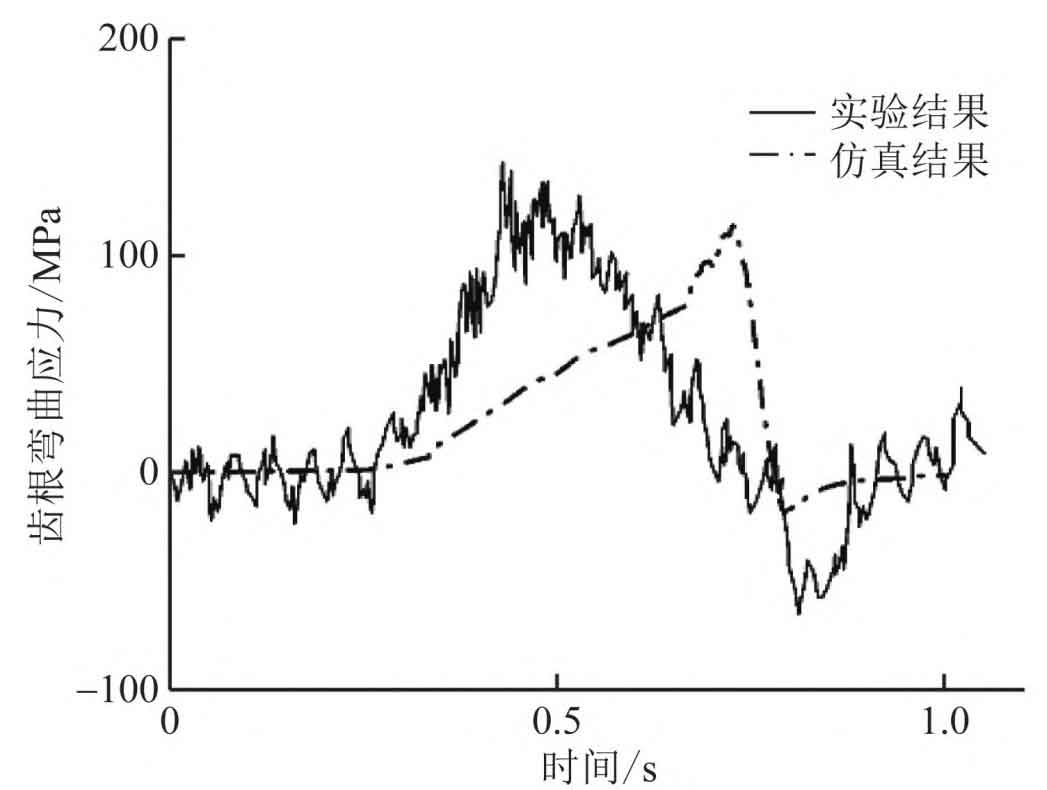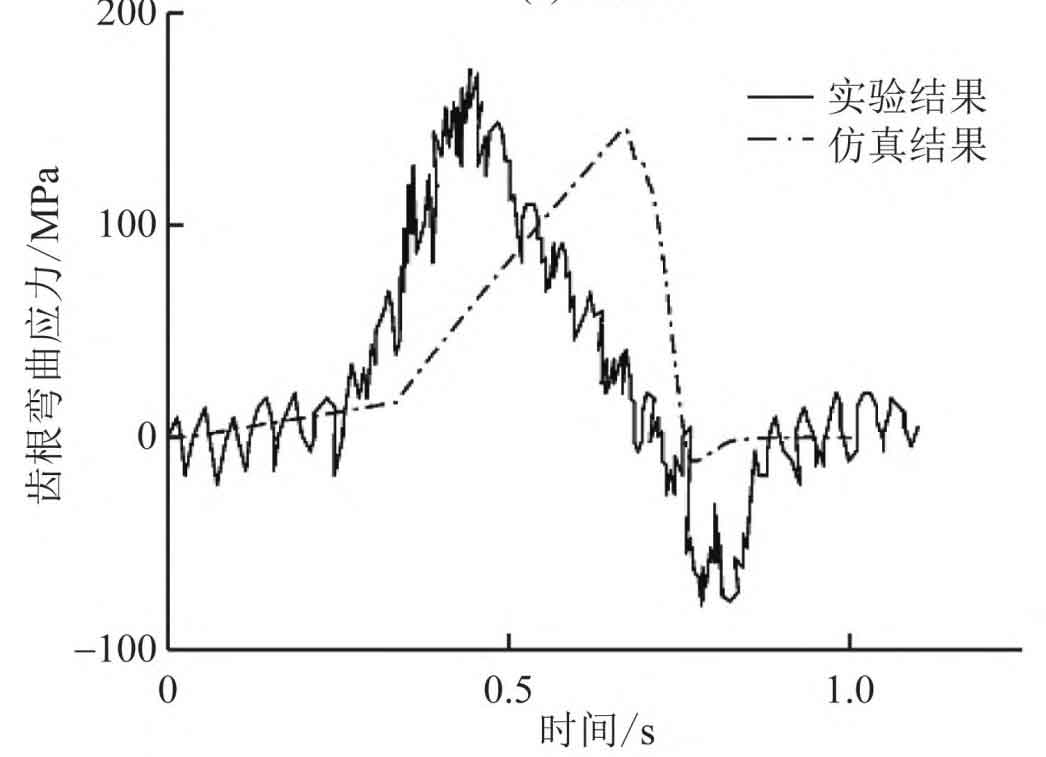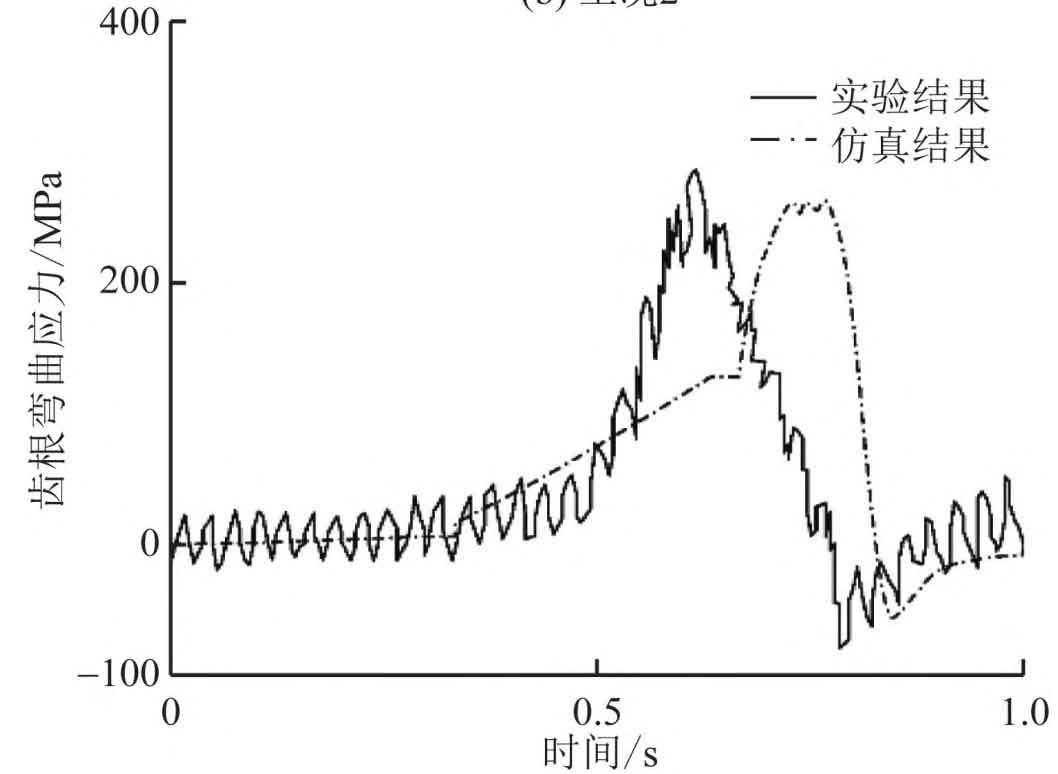In order to study the bending stress of helical gear tooth root, the test will be measured under three working conditions. The rotating speed is 33r / min, and the loading torque is 600, 800 and 1500N · m respectively, which are working condition 1, working condition 2 and working condition 3 respectively. Compare the experimental results with the simulation results, calculate the relative error and verify the simulation model; Because the input torque of the test-bed has a certain deviation, which is affected by installation error, tooth profile error, transmission error and meshing impact, the experimental results will have errors. As the tested helical gear is squeezed by the meshing impact of the front pair of teeth and the meshing impact of the rear pair of teeth, the bending stress as shown in the figure shows a change trend of convex first and concave later; The maximum tensile stress appears near the double tooth meshing position, and the strain values in other areas basically tend to zero, because the measured helical gear withdraws from meshing without load.
Because the frequency of taking points in the strain test in the experiment is different from the time steps set in the simulation calculation, and there will be a certain deviation between the position of the strain gauge patch and the position of the simulation extraction node, the meshing cycle of the gear teeth in the simulation and experiment will be different, so the two maximum bending stresses will not appear at the same time, but their change curves tend to be the same, It shows that the load state of helical gear in simulation and experiment is consistent.
| Working condition | Simulation results / MPa | Experimental results / MPa | Error /% |
| 1 | 113.52 | 133.58 | 17.67 |
| 2 | 146.22 | 173.78 | 18.85 |
| 3 | 262.63 | 295.47 | 12.50 |
The maximum bending stress results in the simulation and experiment are compared as shown in the table. The experimental results under the three working conditions are slightly larger than the simulation results, but the error of the experimental stress value relative to the simulation stress value is not more than 20%, indicating that the experimental results are within the ideal range, which verifies the accuracy of the above contact model.



